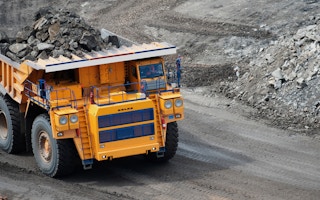Coal will continue to be an essential component of the global energy mix for the next few decades. This in no way diminishes the importance of renewable energy resources and other low carbon strategies. But it does underscore a pragmatic recognition that, for the foreseeable future, coal is central to the energy security of many countries and will continue to play a significant role in ending energy poverty in many regions of the world.
For example, according to the International Energy Agency, growth in world energy demand will continue and energy related CO2 emissions are expected to be 16 per cent higher by 2040 despite coal’s share of total electricity generation falling to 30 per cent.
Still, during the transition from reliance on fossil fuels to less polluting energy resources it is vitally important to minimise the negative environmental impacts. Emissions from coal combustion are a major global problem.
Although there are carbon capture solutions, for cost and technical reasons implementation is likely to be too little too late. However, there is a major greenhouse gas emission and pollutant that can be treated with immediate benefits at the mining end of the supply chain – coal mine methane.
Large volumes of methane are released globally as a consequence of coal mining and proven technologies exist which can be applied widely to significantly reduce these emissions.
In fact, it is feasible to virtually eliminate methane emissions from gassy mines. Capture and use of this methane saves the lives of miners, and efficient use and destruction of the valuable gas provides an affordable but cleaner burning fuel for the communities that surround mining complexes.
Capturing and using or destroying 30 per cent of the total methane released from coal mines would reduce current emissions by over 380 million tonnes CO2 equivalent (based on global coal production of 7,925Mt, 9m3/t average specific emission, 0.716kg/m3; GWP=25).
That’s equivalent to taking some 200 million cars off the road – all the cars in China and more.
Mitigation of methane emissions means immediate gains
Action on coal mine methane (CMM) is particularly important as recent research has shown that the impact of methane on the atmosphere is more far reaching than was originally thought. This is due to its role as a major greenhouse gas and as a short-lived climate pollutant.
Incorporating all the quantifiable impacts of methane released into the atmosphere, each tonne of methane is comparable to 100t CO2 in the near-term and 40t CO2 with a long-term focus.
With respect to short-lived pollutants, each million tonnes of methane emissions avoided equates to:
- 300-400 premature deaths due to ozone
- 186,000 tons of crop yield loss due to ozone
- 002 deg C warming over 2 to 4 decades
- US$3,000-6,000 societal benefits
Mitigation of methane as a source of short-lived pollutants is essential to reducing climate and air quality impacts in the short-term while mechanisms for abating significant volumes of CO2 emissions from burning fossil fuels are put in place for the long-term.
“
However, there is a major greenhouse gas emission and pollutant that can be treated with immediate benefits at the mining end of the supply chain – coal mine methane.
In this respect, the Climate and Clean Air Coalition (CCAC) is focussing on mitigation of short-lived pollutants and partnering with the Global Methane Initiative (GMI) and United Nations Economic Commission for Europe (UNECE) to provide expertise on coal mine gas mitigation.
Coal mines are an easy methane mitigation target
Although other industry sectors produce larger volumes of methane compared with the coal industry, mitigation efforts can have far greater impact and be more cost-effective at coal mines given the magnitude of mine methane emissions at individual mines compared with other industries.
For instance, rapid reductions in methane emissions are far simpler and lower cost to achieve at coal mines than with natural gas systems due to the concentrations of gas sources at specific mine locations compared with the large number of small, discrete sources associated with natural gas production and transport.
How to make it happen
Climate change action needs the active co-operation of the coal mining sector; ostracism by energy policy makers and the financial markets is counterproductive. Release of methane to the atmosphere will continue to degrade the environment and exacerbate climate change, even if it is ignored.
Market-based incentives, such as well-ordered carbon markets, are needed to ensure the opportunity to mitigate CMM is exploited effectively and efficiently now.
In addition, governments and international development agencies should introduce mechanisms for incentivising utilisation and flaring of methane extracted from both working and abandoned coal mines.
Finally, local governments and regulators should seek to remove barriers to CMM project development by clarifying rights of land access, rights to extract and use or destroy CMM and access to energy grids.
Responsible mining companies will align themselves with the initiatives which can benefit the industry and improve the health of employees and neighbouring populations.
David Creedy is head of Sindicatum Sustainable Resources’ Coal Mine Methane group. Clark Talkington is vice president, Advanced Resources International; and Ray Pilcher is president, Raven Ridge Resources. This post is republished from the Sindicatum blog with permission.









